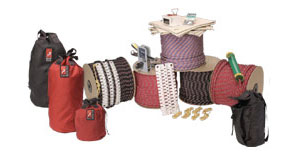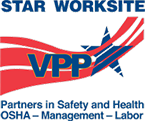 What does getting struck by a pickup traveling 45 mph and being in the path of a trench wall collapse have in common? The outcome is typically not going to be positive…
What does getting struck by a pickup traveling 45 mph and being in the path of a trench wall collapse have in common? The outcome is typically not going to be positive…
A six cubic yard section of trench wall that collapses into an 8 foot deep trench has the weight and speed of a full size pickup traveling 45 mph.
These forces are the reason why a proactive and compliant trench safety program is paramount to your safety as a worker or as a rescuer!
This serves as another reminder of how important it is to be trained in the proper precautions and dangers of trenches and excavations. Once it happens, it’s too late, there’s no time to prepare. As a first responder, be aware when this type work is going on in your district or response area – don’t take chances, know how to protect yourself. And, if you’re involved with the project from the beginning, preplan each job with the utmost precaution.
According to OSHA, excavation and trenching are among the most hazardous construction operations. This type work presents serious hazards to all workers involved. Cave-ins pose the greatest risk and are much more likely than other excavation-related accidents to result in worker fatalities. Other potential hazards include falls, falling loads, hazardous atmospheres, and incidents involving mobile equipment. The regulation that covers requirements for excavation and trenching operations is OSHA 1926.650.
What’s the difference between an excavation and a trench?
OSHA defines an excavation as any man-made cut, cavity, trench, or depression in the earth’s surface formed by earth removal. This can include excavations for anything from cellars to highways. A trench is defined as a narrow underground excavation that is deeper than it is wide, and no wider than 15 feet (4.5 meters).
Why is it important to preplan the excavation work?
No matter how many trenching, shoring, and back-filling jobs you have done in the past, it is important to approach each new job with the utmost care and preparation. Many on-the-job accidents result directly from inadequate initial planning. Waiting until after the work has started to correct mistakes in shoring or sloping slows down the operation, adds to the cost, and increases the possibility of a cave-in or other excavation failure.
A big part of being safe, is being prepared. Knowing as much as possible about the job or work site and the materials or equipment needed is a best practice. Here are a few things OSHA recommends you consider about the site.
1. Traffic
2. Proximity and physical conditions of nearby structures
3. Soil
4. Surface and ground water
5. Location of the water table
6. Overhead and underground utilities
7. Weather conditions
OSHA Excavation and Trenching Standard applies to all open excavations made in the earth’s surface, including trenches. Strict compliance with all sections of the standard will greatly reduce the risk of cave-ins as well as other excavation-related accidents. See the resource below to learn more.

 Residents, family members and friends of the Gulf coast, particularly Louisiana and Mississippi, know the devastation Katrina left in her wake. They can vividly remember the pictures of stranded New Orleaneans on rooftops, floating on scrap metal and wood, houses completely submerged or demolished and looting occurring merely as a means for survival.
Residents, family members and friends of the Gulf coast, particularly Louisiana and Mississippi, know the devastation Katrina left in her wake. They can vividly remember the pictures of stranded New Orleaneans on rooftops, floating on scrap metal and wood, houses completely submerged or demolished and looting occurring merely as a means for survival. In his recently published book, “Lost in Katrina,” author Mikel Shafer tells us that the first bona fide rescue team to arrive in St. Bernard Parish (one of the hardest hit areas) was a Canadian Task Force from Vancouver, British Columbia. Tim Armstrong, Task Force Leader for Vancouver Urban Search and Rescue (as well as a long time Roco Chief Instructor and head of Roco Rescue of Canada, Inc.) received a call from the head of B.C.’s emergency preparedness office about trying to help Louisiana hurricane victims.
In his recently published book, “Lost in Katrina,” author Mikel Shafer tells us that the first bona fide rescue team to arrive in St. Bernard Parish (one of the hardest hit areas) was a Canadian Task Force from Vancouver, British Columbia. Tim Armstrong, Task Force Leader for Vancouver Urban Search and Rescue (as well as a long time Roco Chief Instructor and head of Roco Rescue of Canada, Inc.) received a call from the head of B.C.’s emergency preparedness office about trying to help Louisiana hurricane victims. As hurricane season 2011 begins this month, we look back with a sense of gratitude to all first responders and rescue pros who never hesitated to respond. Of course, we hope we never need them, but if we do, we know they’ll be there to pull us out of crisis and into recovery. Even if it means traveling nearly 3,000 miles.
As hurricane season 2011 begins this month, we look back with a sense of gratitude to all first responders and rescue pros who never hesitated to respond. Of course, we hope we never need them, but if we do, we know they’ll be there to pull us out of crisis and into recovery. Even if it means traveling nearly 3,000 miles. Three important ingredients have combined to produce this year’s active hurricane forecast.
Three important ingredients have combined to produce this year’s active hurricane forecast.


 As a first responder, it’s your worst nightmare… pulling up to a scene of a building collapse with a woman trapped under a beam screaming out for her child who’s buried in the rubble. That’s what happened yesterday in a small town in Arkansas that’s located about 55 miles west of Little Rock. With an incident like this – or the recent tornados with destruction everywhere in sight – would you know how to make the best use of the tools on your apparatus while waiting for USAR back-up?
As a first responder, it’s your worst nightmare… pulling up to a scene of a building collapse with a woman trapped under a beam screaming out for her child who’s buried in the rubble. That’s what happened yesterday in a small town in Arkansas that’s located about 55 miles west of Little Rock. With an incident like this – or the recent tornados with destruction everywhere in sight – would you know how to make the best use of the tools on your apparatus while waiting for USAR back-up?


